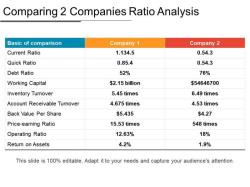What is a Class A life insurance policy beneficiary?
Life insurance is one of the most important financial tools you can use to protect your loved ones. Its core purpose is to provide a financial safety net when you’re no longer there to do so yourself. However, the value of your policy is only as good as the beneficiary designations you've made. These designations determine exactly who receives the policy payout—the death benefit—when you pass away.
Mistakes or outdated information in these designations can lead to significant delays, legal complications, and, in the worst cases, the money not going to the person you intended.
The goal of this article is to clearly define what a Class A life insurance beneficiary is, explain how this designation differs from other classes, and outline the essential factors policyholders should consider when naming or updating their beneficiaries. Understanding these distinctions is critical to ensuring your life insurance proceeds provide the right financial support to the right people, with minimal legal hassle.
What Is a Class A Life Insurance Policy Beneficiary?
A Class A life insurance beneficiary is the primary recipient of the life insurance benefits. In simple terms, they are the first in line to receive the full death benefit upon the insured’s death. This designation is your top priority for financial support from your policy.
This class is typically reserved for those who are most financially dependent on the insured, such as a spouse, children, or other close dependents. Because they are primary, the benefit payment goes directly and entirely to the named Class A beneficiary or beneficiaries, bypassing the need for a will and the often lengthy probate process.
It is only if all designated Class A beneficiaries are deceased that the benefit may then be transferred to the next level, the Class B beneficiaries.
To illustrate this clearly:
If John names his wife, Sarah, as the sole Class A life insurance beneficiary and names his brother, Tom, as the Class B beneficiary, Sarah receives the entire death benefit when John dies.
If both John and Sarah were to pass away in a common accident, then the benefit would pass to Tom (the Class B beneficiary).
The Class A designation is your most direct instruction to the insurance company on who should receive the funds first.
How Does a Class A Beneficiary Differ from Class B or C?
The tiered system of beneficiary classes is a crucial component of estate planning.
Class B: Secondary or Contingent Beneficiaries
Class B beneficiaries are known as secondary or contingent beneficiaries. They are the next in line. They only receive the death benefit if every person named in Class A is deceased or has been legally disqualified from receiving the funds.
For example, if you name your spouse as Class A and your two adult children as Class B, the children will only receive the payout if your spouse passes away before you do.
Class C: Tertiary Beneficiaries
Class C beneficiaries are tertiary beneficiaries—a further backup level that is less common but still valuable for high-net-worth or complex estate plans. They receive the benefit only if all Class A and all Class B beneficiaries are deceased. This layer provides an extra safety net against the proceeds becoming "unclaimed benefits" or reverting to your estate, which would force the money into probate.
The Payment Hierarchy
Establishing these layers is essential to prevent two major complications: legal disputes among family members and the lengthy probate process. By clearly setting the payment order, you reduce ambiguity.
| Beneficiary Class | Description | When They Receive Benefits | Example |
| Class A | Primary beneficiary | Immediately upon the insured’s death | Spouse, child, or close dependent |
| Class B | Secondary/Contingent | Only if all Class A beneficiaries are deceased | Sibling, parent, or close friend |
| Class C | Tertiary | Only if both Class A and Class B beneficiaries are deceased | Charity, trust, or business partner |
This simple hierarchy provides unparalleled clarity in estate planning, guaranteeing a smooth and timely transfer of wealth.
Who Can Be Named as a Class A Beneficiary?
The general rule is that anyone with a legitimate insurable interest in your life can be named as a Class A beneficiary. An insurable interest means the person would suffer a financial loss upon your death.
The most common Class A beneficiaries include:
Spouse or Registered Domestic Partner: The most frequent primary beneficiary, as they are often financially reliant on the insured.
Children: Biological, adopted, or stepchildren.
Parents or Legal Guardians: Especially if they are financially dependent on the insured.
Beyond immediate family, policyholders can also name other entities, though the circumstances may be more specific:
Trusts: Naming a revocable living trust as the Class A beneficiary is a popular strategy for managing assets for minor children or for beneficiaries with special needs.
The trust document dictates how and when the money is distributed. Charities: You can name a charitable organization as a primary recipient.
Business Partners: In the case of Key Person insurance, a business partner or the business itself may be the Class A beneficiary to ensure business continuity.
Factors to Consider Before Naming a Beneficiary
Before you finalize your beneficiary designations, take the time to consider these important factors:
Financial Dependence: Is the person you are naming truly the one who needs the financial support the most?
Age of Beneficiary: If you name a minor child, the insurance company will not pay the death benefit directly to them. A court-appointed guardian or trustee will be required to manage the funds, which is why naming a trust is often a better solution.
Tax Implications: Life insurance proceeds are generally income-tax-free for the beneficiary, but the policy may be included in the insured’s taxable estate, depending on how it's owned. Consulting a tax professional is always a good idea.
Most importantly, you must keep your beneficiary information current. A marriage, divorce, or childbirth is a major life event that should trigger an immediate review and update of your policy's beneficiaries.
What Happens If a Class A Beneficiary Dies Before the Insured?
This is one of the most critical reasons for having a layered beneficiary structure.
If a Class A life insurance beneficiary predeceases the insured, the policy proceeds typically bypass the deceased Class A beneficiary and pass directly to the Class B (contingent) beneficiaries. This transition is automatic based on the designations you’ve established.
However, when multiple beneficiaries are named in the same class, things can get complicated, which introduces the concept of how benefits are divided: per stirpes versus per capita.
Per Capita (By Head): The death benefit is divided equally only among the living named beneficiaries in that class. If one of your two Class A children dies, the benefit goes entirely to the one living Class A child. The deceased child's descendants (your grandchildren) would receive nothing.
Per Stirpes (By Branch): The benefit is divided equally among the named beneficiaries, but if one has died, that person’s share is then passed down to their living descendants. This ensures the money stays within that specific family "branch."
Most insurance applications default to per capita unless otherwise specified. If you have any doubt about which method is best for your family, you should seek guidance from a financial or estate planning professional.
The Dangers of Failure to Update
A failure to update beneficiary designations after a major life event or a death is highly problematic.
Case Scenario: Lisa names her mother as the sole Class A beneficiary and never names a Class B beneficiary. Her mother passes away five years before Lisa. When Lisa dies, the insurance company cannot pay out the benefit because the primary beneficiary is gone, and there is no backup. The money is then paid to Lisa's estate, forcing it into the slow, expensive, and public probate process.
This scenario is what the Class B and C designations are specifically designed to prevent. The simple act of naming a secondary beneficiary is your best defense against having your death benefit tied up in court.
How Do You Update Beneficiary Designations on a Policy?
Updating your life insurance beneficiary is usually a straightforward process, but it requires precision and formality. Verbal instructions or instructions left in a will generally do not override the official, signed beneficiary form on file with the insurance company.
Follow these steps to ensure your changes are recorded accurately:
Contact the Insurance Provider: Call your agent, the insurance company's customer service line, or log in to your policy's online portal. Most insurers prefer you use the official forms, which may be available online or can be mailed to you.
Complete the Beneficiary Change Form: This is a critical legal document. You must provide the full legal name, relationship, and Social Security Number (or Tax ID) of each person you are naming. You must explicitly indicate who is Class A (Primary) and who is Class B (Contingent/Secondary).
Submit Required Documentation: In some cases, such as a divorce, the insurer may require a copy of the divorce decree or other legal documents to process the change.
Be prepared to provide identification if requested. Confirm the Change: This is arguably the most important step. After submitting the form, call the insurance company to confirm that the changes have been officially processed, recorded, and acknowledged in your policy file. Get a written confirmation for your records.
The Importance of Regular Review
You should treat your life insurance beneficiary designations as a living document. It's best practice to review your policy at least once a year, or immediately after any of these major life events:
Marriage or Divorce
Birth or Adoption of a Child
Death of a Beneficiary
Purchase of a new home or significant change in debt level
Major change in a beneficiary's financial situation
Regular review ensures that the life insurance payout hierarchy always aligns with your current family structure and financial intentions.
Frequently Asked Questions (FAQ)
Can I name multiple people as Class A beneficiaries?
Yes. You can name multiple Class A life insurance beneficiaries and assign them specific percentages. For instance, you could name your spouse as 50% and your two children as 25% each. The combined percentages must equal 100%. If you do not specify percentages, the payout will typically be divided equally (per capita) among all living named Class A beneficiaries.
Do Class B or C beneficiaries get anything if Class A is alive?
No. Class B (contingent) or Class C (tertiary) beneficiaries only receive the death benefit if every single person named in the preceding class is deceased or legally disqualified when the insured passes away. Their designation acts purely as a backup.
How are life insurance proceeds divided among multiple beneficiaries?
If you name multiple beneficiaries in the same class (e.g., three children as Class A) and do not assign percentages, the proceeds are typically divided per capita (equally) among the living beneficiaries in that class. You can, however, specify unequal percentages (e.g., Child A gets 70%, Child B gets 30%).
Can a minor be a Class A beneficiary?
Yes, a minor can be named, but the insurance company will not release the funds directly to a child under the age of 18 (or 21 in some states).
Conclusion
A Class A life insurance beneficiary is the primary, first-in-line recipient of your policy's death benefit—the person or entity you most intend to protect financially. Understanding the different life insurance beneficiary classes and the clear difference between Class A and Class B beneficiaries is a fundamental step in responsible financial planning.
By clearly defining and meticulously updating your primary and contingent beneficiaries, you build a robust and unambiguous life insurance payout hierarchy. This ensures your financial protection goes exactly where you want it to go, without unnecessary legal delays.
We encourage you to regularly review your policy, especially after any major life event, to confirm that your beneficiary designations remain current and accurately reflect your intentions. Consulting with a financial advisor or estate planning attorney can provide invaluable guidance to ensure your legacy is protected.













SpousalSupport
on October 14, 2025As a spouse, understanding I'm the first in line (Class A) gives great peace of mind. I've noted to review the policy after our next major life change.
AnnualReviewer
on October 14, 2025Excellent reminder to regularly update your policy. I check my Class A designations every year with my tax documents. It only takes a few minutes.